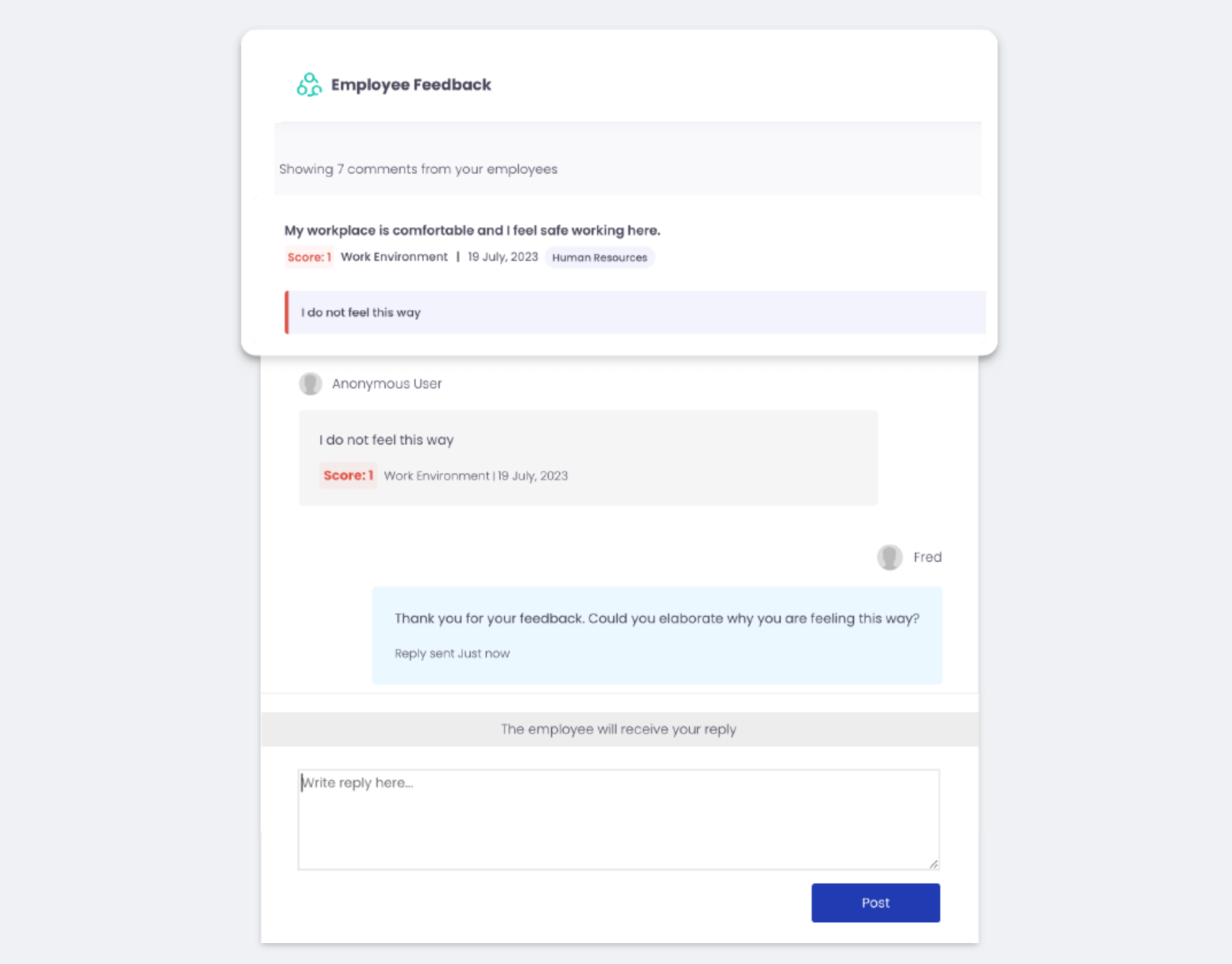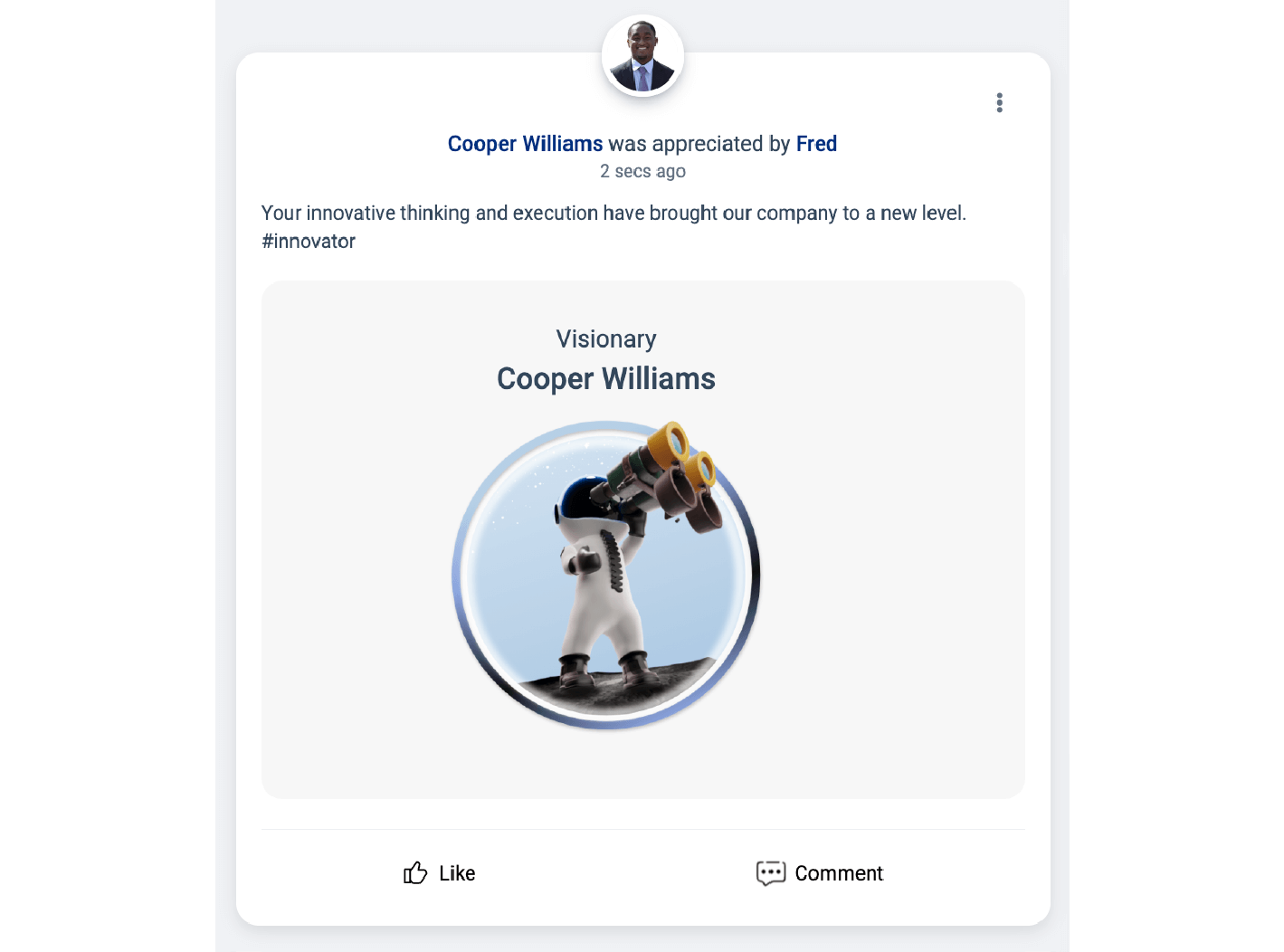5 Root Causes of Low Employee Morale (With Clear Signs & Fixes)

A Global Employee Recognition and Wellness Platform
In most organizations, morale problems don’t show up all at once. They creep in slowly, hidden beneath routine Zoom meetings, unspoken frustrations, and a growing sense of “just getting by.” One disengaged employee becomes two. Deadlines are met, but the energy is gone.
Low employee morale isn’t just a temporary dip in mood; it’s a warning sign that something deeper needs attention. According to Gallup’s State of the Global Workplace 2023 Report, low engagement and low employee morale are costing the global economy $8.8 trillion in lost productivity annually.
So, what exactly is employee morale?
Employee morale reflects how employees feel about their jobs, their team, and the organization as a whole. When morale is low, employees often feel unmotivated, undervalued, and disconnected from their work.
And the consequences? They show up everywhere: higher turnover, absenteeism, lower output, and even damaged team dynamics. It’s why leading HR professionals now track morale as closely as performance metrics.
Whether you’re an HR leader, people manager, or team supervisor, this guide will help you proactively address morale issues before they escalate into disengagement or worse, attrition.
In this blog, you’ll discover:
Key Takeaways
- The top root causes behind low employee morale
- How to spot early warning signs in behavior, performance, and team energy
- Proven strategies to rebuild morale and sustain a healthier, more engaged workplace culture
Top 5 Root Causes of Low Employee Morale
1. Leadership and Management Deficiencies
Effective leadership is the cornerstone of a motivated, productive workforce. When leadership is unclear, it’s not just the team that suffers; the entire company suffers as a result.
Here are some of the top leadership and management deficiencies that can cause morale to plummet:
1.1. Lack of Clear Direction and Vision
When employees don’t understand the bigger picture or the goals their team is working toward, their sense of purpose diminishes. Clear direction and a well-defined company vision help employees see how their individual contributions align with the organization’s success. Without this clarity, employees may feel adrift or disconnected from the company’s mission, leading to disengagement.
Fix it: Regular town halls, team meetings, and goal-setting sessions ensure everyone is aligned. Leaders who communicate a compelling vision help build a motivated workforce.
1.2. Poor Communication and Transparency
Communication is the lifeblood of any organization. When there is a communication breakdown or when employees are left in the dark about decisions, it can lead to frustration, mistrust, and low morale. When employees are kept in the loop about company changes, performance, and expectations, it helps build trust and engagement. Without this, rumors spread, and morale takes a hit.
Fix it: Leaders should actively seek employee input, be transparent about challenges, and provide regular feedback. Tools like pulse surveys and anonymous feedback channels can help employees feel heard and valued.

Source: Vantage Pulse Anonymous Feedback Feature
1.3. Micromanagement vs. Lack of Support
Micromanagement can quickly drain morale. When employees feel like they are being watched too closely or that their judgment isn’t trusted, it can lead to frustration, disengagement, and ultimately burnout.
On the other hand, a complete lack of support from managers can leave employees feeling abandoned or directionless. Both extremes are detrimental to morale.
Fix it: Leaders should focus on building trust with their teams, allowing them the autonomy to make decisions while providing guidance when necessary. Regular one-on-ones can help strike the right balance.
1.4. Absence of Recognition and Appreciation
A lack of recognition can leave employees feeling undervalued and unnoticed. When hard work and achievements go unacknowledged, employees may begin to question their worth and their place within the company. As per a Forbes article, 66% of employees would quit their job if they don’t feel appreciated in the workplace.
Fix it: Recognition should be part of the company culture. Implementing a formal recognition program like Vantage Recognition can ensure that employees' contributions are celebrated regularly.

Source: Vantage Recognition
1.5. Perceived Favoritism or Unfair Treatment
When employees perceive that certain individuals are favored over others, whether through promotions, rewards, or work assignments, morale can quickly decline due to favoritism concerns. This favoritism perception undermines trust in leadership while creating unhealthy competition or resentment among team members that further damages workplace morale.
Fix it: Ensuring a fair and transparent reward system that acknowledges hard work and success for all employees is critical. Leaders should foster an inclusive culture where merit, rather than personal relationships, determines recognition and rewards.
2. Work Environment and Company Culture Issues
The work environment and overall company culture play a significant role in shaping employee morale. A positive and inclusive environment promotes engagement and satisfaction, while a toxic culture can drain energy and undermine productivity.
Let’s take a closer look at the most common cultural issues that can negatively impact employee morale:
2.1. Toxic or Negative Workplace Culture
A toxic work environment, characterized by constant negativity, hostility, or unethical behavior, can quickly drain morale. When employees are surrounded by gossip, backstabbing, or a general atmosphere of distrust, they feel less motivated to give their best.
But even relatively modest levels of toxic behavior can cause major organizational cost, including customer loss, loss of employee morale, increased turnover, and loss of legitimacy among important external stakeholders.
– Harvard Business School
Fix it: Leadership should promote values of respect, collaboration, and integrity. Establishing clear expectations for behavior and addressing toxic conduct promptly will help improve the work environment. Encouraging positive interactions and fostering inclusivity can help neutralize negativity.
2.2. Lack of Trust and Psychological Safety (How anonymous surveys can give voice to concerns)
Psychological safety, the belief that employees can speak up without fear of retaliation, is a critical factor in a healthy work environment. When employees don’t feel safe to express their thoughts, concerns, or ideas, it leads to suppressed innovation, increased stress, and disengagement. A lack of trust between employees and leadership compounds the issue, making employees hesitant to contribute or take initiative.
Fix it: Promote open dialogue and provide employees with anonymous feedback mechanisms, allowing them to express their thoughts freely. Additionally, a management team that listens with empathy and acts on feedback helps foster trust and psychological safety.
Related Read: How to Create Psychological Safety at Work
2.3. Inadequate Resources or Tools
Employees can’t perform their best if they don’t have the tools to do their job. Insufficient resources, outdated technology, or poor training programs can lead to frustration and burnout. When employees feel like they’re being set up to fail due to inadequate support, morale takes a sharp dive.
Fix it: Invest in training, modern tools, and resources that enable employees to perform at their best. Regularly assess the needs of teams to ensure they have the support and equipment necessary to succeed.
2.4. Poor Work-Life Balance and Burnout
Work-life balance has become a priority for the new generation of employees. When employees feel overwhelmed by long hours, unrealistic expectations, or constant stress, it leads to burnout and disengagement. Deloitte’s 2023 Gen Z and Millennial Survey report found that 77% of Gen Z employees identified work-life balance as a key factor in deciding whether to stay at their job.
Fix it: Organizations should offer flexible work hours, remote work options, and regular breaks to help employees manage stress. Additionally, companies can implement wellness programs with the help of platforms like Vantage Fit to encourage employees to stay active and practice mindfulness.

Source: Vantage Fit
3. Job Role and Career Development Concerns
Employees want to feel like they’re growing in their roles and advancing in their careers. When job roles become stagnant or unclear, employees lose motivation and a sense of purpose. Here’s how job-related issues can lead to low morale:
3.1. Lack of Growth Opportunities and Career Progression
When employees can’t see a clear path for advancement, they may feel stuck in their current role. This lack of career progression can lead to disengagement and an eventual departure from the organization. According to LinkedIn’s 2023 Workforce Report, employees stated that career advancement is a key factor in their decision to stay at a company.
Fix it: Create clear career development paths with training programs, mentorship opportunities, and internal mobility options. Regular performance reviews that focus on growth and future opportunities help keep employees motivated.
3.2. Unclear Job Expectations or Role Ambiguity
When employees don’t know exactly what’s expected of them or feel unclear about their role, it leads to confusion, frustration, and decreased productivity. Ambiguous job descriptions and shifting priorities can cause employees to waste time or perform tasks that don’t align with their strengths.
Fix it: Managers should define clear roles and expectations from the outset. Regular check-ins and feedback sessions ensure employees stay on track and understand how their contributions matter to the overall goals of the team and organization.
3.3. Monotonous or Unchallenging Work
Employees who perform repetitive, monotonous tasks without any opportunity for creative problem-solving or innovation can feel disengaged. The lack of challenges can make them question the value of their role or their personal growth potential within the company.
Fix it: Offer employees a variety of tasks, cross-training opportunities, or stretch assignments that encourage new learning and skills development. Empower employees with more responsibility and autonomy where appropriate.
3.4. Feeling Undervalued or Underutilized
Employees who feel their contributions are unrecognized or underutilized may feel disconnected from the company’s success. When an employee’s skills and expertise go unappreciated, it can lead to frustration and a sense of worthlessness.
Fix it: Recognition is a powerful tool. Make sure employees receive regular acknowledgment for their contributions, whether through peer recognition, manager praise, or formal programs.

Source: Vantage Recognition
4. Compensation and Benefits Dissatisfaction
Compensation issues, whether related to pay, benefits, or incentives, are often at the heart of low morale. When employees feel they aren’t being compensated fairly, it can lead to disengagement and higher turnover. Here's how compensation issues affect employee morale:
4.1. Perceived Unfair Compensation Compared to Market or Peers
When employees feel that they are being underpaid relative to their peers, either within the company or in the broader market, it can lead to dissatisfaction and resentment.
According to a Glassdoor survey, 67% of employees stated that they would leave their jobs for a better salary offer.
Fix it: Regular market salary reviews can ensure that your employees are compensated fairly based on their role and industry standards. Transparency in pay scales and having clear communication about raises and bonuses will help employees feel their compensation is aligned with their contribution.
4.2. Inadequate Benefits Package
Beyond salary, employees value benefits like health insurance, retirement plans, paid time off, and flexible working arrangements. When benefits are perceived as inadequate or outdated, it can contribute to a sense of being undervalued. According to the 2024 Intuit QuickBooks Allstate Health Solutions Benefits Survey, 78% of employees would likely look for a new role if their benefits package was inadequate.
Fix it: Regularly assess your benefits package and ensure it meets the evolving needs of your employees. Consider offering flexible options like wellness stipends, remote work stipends, or access to health-focused platforms to help employees manage both their professional and personal well-being.
4.3. Lack of Performance-Based Incentives
Performance-based incentives serve as a powerful motivator for employees. When employees don’t see any direct connection between their performance and their rewards, it can lead to disengagement and lower morale.
Fix it: Build a clear performance-based rewards system that aligns individual and team efforts with organizational goals.
5. Organizational Changes and Instability
Frequent or poorly managed changes can destabilize morale. Whether it’s company restructuring, shifts in management, or uncertainty about the future, organizational instability can cause anxiety and lead to disengagement. Here are some ways that organizational changes can affect morale:
5.1. Poorly Managed Change Initiatives
Change is inevitable in any business, but how it’s handled can make or break morale. Poorly communicated or abruptly implemented changes can leave employees feeling unprepared, anxious, or even resentful. Employees may feel that they’re being left out of the decision-making process, which can increase stress and distrust.
Fix it: Changes should be communicated proactively and thoughtfully. Involve employees in the change process, explaining the reasons and its impact on the company and its workforce. Regular check-ins and feedback during transitions can also help ease anxiety and build trust.
5.2. Job Insecurity and Fear of Layoffs
Job insecurity, whether real or perceived, can significantly harm morale. Employees who are worried about layoffs or restructuring are less likely to be productive or engaged in their work. A study examining the link between job insecurity and employee engagement found that 85.69% of job-secure employees were engaged at their work, compared to just 78.59% of job-insecure employees.
Fix it: During periods of uncertainty, it’s essential to gauge employee sentiment through surveys and feedback loops. Open communication about the company's financial status and plans for the future can help reduce anxiety and build trust.
5.3. Lack of Involvement in Decision-Making Processes
When employees are excluded from decision-making processes, they may feel that their opinions are not valued. This leads to a disconnection from the company’s goals and can leave employees disengaged.
Empowered employees are more engaged, put in greater effort, and demonstrate stronger loyalty to the company.
– McKinsey & Company
Fix it: Foster an inclusive culture by seeking input from employees at all levels. Empower employees to participate in decisions that affect their roles or the organization. This can be done through regular team meetings, anonymous feedback tools, and employee-driven initiatives.
The Impact of Low Employee Morale
When employee morale is low, it affects more than just the happiness of your team. It impacts the very foundation of your organization. From increased turnover to decreased productivity, the effects are far-reaching. Let’s dive into the high costs and long-term consequences that can arise when morale is not addressed.
1. Increased Employee Turnover and Recruitment Expenses
When employees are disengaged and dissatisfied, they’re more likely to leave the organization. High turnover leads to substantial costs in recruiting and training replacements. Research from SHRM suggests that replacing an employee can cost anywhere from 50% to 200% of their annual salary, depending on the role and industry.
2. Reduced Productivity and Output
Employee morale is directly linked to productivity performance. Disengaged employees put in the minimum effort required, leading to a productivity dip in overall output. According to Gallup, teams with high engagement and productivity achieve 14% higher productivity than those with low morale. When morale is low, productivity suffers as employees are less likely to go above and beyond, and their work quality often declines.
3. Higher Rates of Absenteeism and Presenteeism
Low morale contributes to both absenteeism (employees missing work) and presenteeism (employees coming to work but not fully engaged). Disengaged employees are more likely to call in sick and have frequent unplanned absences. Even when they’re present, low morale can lead to decreased effectiveness at work, as employees are often distracted or unmotivated.
4. Decreased Work Quality and Customer Satisfaction
When employees are disengaged, their work quality can deteriorate. Mistakes, overlooked details, and poor communication can directly affect the customer experience. A Gallup study found that companies with highly engaged employees have 10% higher customer satisfaction rates, leading to stronger brand loyalty and repeat business.
5. Erosion of Company Culture and Team Cohesion
When employees are disengaged, they are less likely to contribute to building a positive company culture that supports team collaboration. Low morale leads to disconnected teams and poor collaboration. As trust and communication break down, the culture deteriorates, making it harder to attract and retain top talent.
6. Damage to Employer Brand and Reputation
A company’s reputation is heavily influenced by employee satisfaction. When employees feel undervalued or mistreated, they’re more likely to leave negative reviews on platforms like Glassdoor or Indeed. Word-of-mouth, spread internally and externally, can also damage the employer brand.
7. Increased Workplace Conflict and Grievances
Low morale breeds conflict. Employees who are disengaged or unhappy may begin to express their frustration through complaints, grievances, or conflicts with their coworkers. This can lead to a toxic work environment, further diminishing morale and productivity.
8. Stifled Innovation and Creativity
Employees who are not motivated are less likely to contribute creative ideas or go the extra mile to solve problems. Disengaged employees are focused on just getting the job done, rather than innovating or seeking ways to improve processes.
Recognizing the Signs of Low Morale at Work
Low employee morale often manifests itself in visible behaviors, performance changes, and attitudes that are hard to ignore. By recognizing the early signs, you can address the issue before it spirals into something more serious. Here are the key indicators of low morale to watch out for:
Behavioral Indicators
1. Increased Negativity and Complaining
One of the first signs of low morale is a noticeable shift in attitude. Employees who were once optimistic and engaged may begin to express frustration, dissatisfaction, and negativity. They might complain about their work, leadership, or the company as a whole. Left unchecked, negativity can spread to others and create a toxic work environment.
2. Withdrawal and Reduced Participation in Team Activities
Employees who are disengaged may begin to withdraw from team activities, meetings, and social events. They may stop participating in brainstorming sessions or company-wide initiatives. Over time, this isolation can spread to other employees, affecting team cohesion and overall morale.
3. Higher Rates of Tardiness and Absenteeism
When morale is low, employees may feel less motivated to show up to work, or they may call in sick more frequently. Increased absenteeism is a red flag that something is amiss. It can indicate burnout, stress, or disinterest in the work.
4. Decreased Initiative and Proactiveness
Employees with low morale will often exhibit a lack of initiative. They may avoid taking on new projects, miss opportunities to contribute ideas, or show a general reluctance to go the extra mile. This lack of motivation impacts team performance and can lead to stagnation.
5. Increase in Workplace Gossip and Rumors
Gossip and rumors tend to increase in environments where trust is lacking and morale is low. Employees may seek to fill the void left by a lack of communication with speculative stories, leading to a breakdown in trust and further engagement issues.
Performance-Related Indicators
1. Decline in Work Quality and More Errors
When morale dips, employees may start to make more mistakes or deliver lower-quality work. This could be due to a lack of focus, reduced effort, or a disconnect from the organization’s goals.
2. Missed Deadlines and Lower Productivity
Another clear indicator of low morale is when employees consistently miss deadlines or fail to meet productivity expectations. A lack of motivation can lead to procrastination, poor time management, and an overall decline in output.
3. Reduced Enthusiasm for New Projects
Employees with low morale will often be hesitant to take on new projects or challenges. They may lack the enthusiasm or drive to push themselves outside their comfort zones.
4. Lack of Engagement in Meetings
When employees feel disconnected, they often disengage in meetings. They may zone out, fail to participate, or show no interest in the content being discussed. This lack of engagement in meetings is a strong sign that morale is low.
Attitudinal Indicators
1. Cynicism and Apathy
When employees are disengaged, they may start to show signs of cynicism. They may question the company's goals, leadership, or the value of their own work. Apathy often sets in when employees no longer see any purpose in their tasks.
2. Lack of Pride in Work or the Organization
Employees with low morale may feel disconnected from the company and its values. They might stop taking pride in their work or feel embarrassed to represent the company, which impacts both individual and team performance.
3. Resistance to Change
Employees who are disengaged may resist change, even when it’s necessary for growth or improvement. They may feel that changes are irrelevant to them, or that the organization doesn't value their input in decision-making.
4. General Lack of Enthusiasm or Energy
A general lack of enthusiasm or energy can be one of the most noticeable signs of low morale. Employees who are disengaged often show a lack of energy at work, which affects productivity and workplace culture.
Steps to Improve Employee Morale and Prevent Its Decline
Addressing low employee morale requires a strategic approach and a commitment to continuous improvement. Here are several actionable steps that HR professionals, team leads, and managers can take to boost morale, foster engagement, and create a positive work environment:
1. Fostering Effective Leadership and Communication
Leadership is the key to maintaining high morale. Managers who are skilled in empathy, communication, and conflict resolution are more likely to foster a positive environment.
1.1. Invest in Leadership Training and Development
Investing in leadership development programs helps managers improve their ability to lead effectively, communicate openly, and inspire their teams. Offer leadership training that focuses on building emotional intelligence, active listening, and conflict management.
1.2. Promote Open, Honest, and Transparent Communication Channels
Effective communication is essential in maintaining employee trust and morale. Implement regular town halls, team meetings, and feedback loops to ensure transparency. Use tools like pulse surveys and employee feedback channels to facilitate open communication at all levels.
1.3. Regularly Solicit and Act on Employee Feedback
Employees want to feel heard. Use engagement surveys or anonymous feedback platforms to gather insights from employees. Make sure to act on the feedback to demonstrate a commitment to employee well-being.
2. Cultivating a Positive and Supportive Work Environment
2.1. Champion a Culture of Recognition and Appreciation
Employees need to feel appreciated for their efforts. Use a structured employee recognition platform like Vantage Recognition to ensure that appreciation is timely, specific, and consistent. Make recognition a part of your daily culture, not just an annual event.
2.2. Encourage Team Building and Social Interaction
Workplaces with strong social connections tend to have better morale. Organize regular team-building activities, both virtual and in-person, that encourage collaboration and social interaction. From casual coffee chats to team challenges, these events help build trust and camaraderie.
2.3. Prioritize Work-Life Balance and Employee Well-Being
Burnout is a significant contributor to low morale, particularly in high-stress work environments. Introduce flexible working hours, remote work options, and wellness programs to support employees' physical and mental well-being. Encourage employees to take regular breaks, and ensure they have access to resources like counseling or fitness apps.
2.4. Ensure a Safe and Inclusive Workplace
Employees need to feel safe, both physically and emotionally, in the workplace. Promote diversity and inclusion initiatives, provide anti-harassment training, and ensure that your workplace is welcoming for everyone. Offer resources like support groups or employee resource networks to ensure inclusivity across all levels.
3. Empowering Employees and Supporting Growth
3.1. Provide Clear Career Paths and Development Opportunities
Employees want to know that there are opportunities for growth within the organization. Offer mentorship programs, training opportunities, and regular career pathing discussions. Help employees set personal and professional goals, and provide the support they need to achieve them.
3.2. Offer Meaningful and Challenging Work
Employees thrive when they are given meaningful, challenging work that aligns with their skills and passions. Make sure employees have opportunities to work on challenging projects that align with their strengths. Encourage employees to take ownership of their work and introduce projects that stretch their skills and creativity.
3.3. Empower Employees with Autonomy and Responsibility
Micromanagement is a morale killer. Encourage managers to delegate responsibilities and give employees the freedom to make decisions. Recognize and reward employees who show initiative and take responsibility for their projects.
3.4. Invest in Training and Skill Enhancement
Continuous learning is essential to both personal and professional growth. Offer learning and development stipends, provide training programs, or pay for professional certifications. Providing employees with the tools to develop their skills will keep them engaged and ready for new challenges.
4. Ensuring Fair Compensation and Acknowledging Contributions
4.1. Conduct Regular Compensation Reviews to Ensure Competitiveness
Compensation plays a huge role in employee morale. Regularly review compensation against market rates and adjust salaries as needed to remain competitive. Consider adding performance-based bonuses or commission structures to reward high performers.
4.2. Implement Fair and Transparent Performance Evaluation Systems
Employees want to know how their performance will be evaluated. Ensure that performance evaluations are transparent and fair. Use clear, measurable criteria to assess performance and provide feedback. Allow employees the opportunity to set goals and track their progress.
4.3. Offer Non-Monetary Rewards and Recognition
While salary is important, non-monetary rewards like recognition, flexible working hours, or extra time off can have a powerful impact on morale. Implement an employee recognition program that offers both monetary and non-monetary rewards. Offer personalized rewards like gift cards, extra vacation days, or public recognition to make employees feel valued.
5. Managing Change Effectively
5.1. Communicate Changes Clearly and Proactively
Change is inevitable in any organization, but poor communication can lead to confusion and stress. Communicate change clearly and proactively. Hold meetings to explain changes and provide employees with a platform to ask questions. Transparency during times of change builds trust and minimizes uncertainty.
5.2. Involve Employees in the Change Process Where Possible
Employees who feel like they have a voice in decisions are more likely to support change initiatives. Gather employee input before implementing changes by using surveys or focus groups. Involve them in brainstorming solutions and making decisions that impact their roles or the organization.
5.3. Provide Support and Resources During Transitions
Transitions, whether structural, new leadership, or new technology, can create uncertainty and stress. Offer training sessions, wellness resources, and peer support networks during transitions. Providing employees with the necessary tools to adapt will help them feel supported and engaged.
Summing Up: Rebuilding and Maintaining High Employee Morale
Low employee morale is a challenge that no organization can afford to ignore. When morale is down, the effects ripple through every aspect of the business, from reduced productivity and absenteeism to higher turnover and even a damaged company culture.
However, by identifying the root causes of low morale, recognizing the signs early, and taking proactive steps, organizations can turn the tide and build a more engaged, motivated, and loyal workforce.
Effective leadership, clear communication, and a positive work environment are key to fostering high morale. Providing growth opportunities, offering fair compensation, and recognizing employees for their hard work further solidifies a foundation for sustained engagement.
Remember, a motivated workforce drives innovation, increases productivity, and enhances customer satisfaction, all of which directly contributes to business success.
It’s important to note that improving morale is not an overnight fix; it’s a continuous effort. By embedding recognition practices, wellness initiatives, and open communication into your company’s culture, you lay the groundwork for long-term success.
Take action now to invest in your employees’ morale, and watch your team transform into a high-performing, motivated force that drives your business forward.
FAQs

Q: How does seasonality, including issues like Seasonal Affective Disorder (SAD), affect employee morale, and what can employers do?
Seasonal changes, particularly during the colder months, can have a significant impact on employee morale. Seasonal Affective Disorder (SAD) is a type of depression that occurs during the winter months when daylight hours are shorter. Employees affected by SAD may experience fatigue, irritability, and a lack of motivation, which can lead to decreased productivity and engagement.
Employers can offer flexible work hours, provide light therapy lamps in the workplace, or encourage outdoor breaks to combat the effects of SAD. Wellness programs, like those provided by Vantage Fit, can also help employees manage their mental health during these months by offering exercise and stress management resources.
Q: What's the difference between employee morale, employee engagement, and job satisfaction?
While these terms are often used interchangeably, they each have distinct meanings:
Employee morale refers to the overall attitude and emotional state of employees in the workplace. Low morale typically manifests as disengagement, negativity, and a lack of motivation.
Employee engagement is the emotional commitment employees have toward their work and the organization. Engaged employees are motivated to perform well and contribute to organizational success.
Job satisfaction measures how content employees are with their specific roles, responsibilities, and the company’s work environment.
Q: How can a direct manager spot and address low morale within their immediate team before it escalates?
Managers should be proactive in observing both behavioral and performance changes in their team members. Signs of low morale often include decreased productivity, increased absenteeism or tardiness, lack of enthusiasm or participation in team activities, and negative comments or complaints about the work environment
Regular one-on-one meetings, open conversations, and offering opportunities for feedback are critical in addressing morale early on. Managers should focus on active listening and show empathy toward team members’ concerns. If the issue is more widespread, involving HR and implementing surveys can help identify the root cause.
Q: Can a single employee with very low morale negatively impact an entire team's spirit, and how should that be handled?
Yes, a single employee with low morale can influence the overall mood of the team. This individual’s negativity or disengagement can be contagious, leading to a decrease in motivation and collaboration among other team members.
Address the issue directly with the employee. It’s important to understand the root cause of their dissatisfaction and offer support, whether through coaching, mentorship, or wellness initiatives. If the individual’s morale is not improved, it may be necessary to reevaluate their role or responsibilities to better align with their strengths and motivations.
Q: Are there any "quick wins" or immediate small gestures that can help boost morale temporarily while more significant strategies are being implemented?
Yes, there are several quick wins that can immediately lift team morale, including:
- Expressing gratitude: A simple “thank you” for hard work can go a long way.
- Team lunches or virtual coffee breaks: Encourage informal social time to strengthen team bonds.
- Celebrating small wins: Recognize accomplishments, both big and small, to create a sense of achievement.
- Offering flexibility: Allow employees to take time off when needed or adjust their schedules for a better work-life balance.
Q: Beyond formal surveys, what are some informal ways an organization can continuously monitor the "pulse" of employee morale?
In addition to formal surveys, there are several informal methods for continuously monitoring employee morale:
- Informal check-ins: Regularly ask team members how they’re doing during one-on-one meetings.
- Team feedback sessions: Encourage open discussions in team meetings where employees can share thoughts on work-related matters.
- Observation: Pay attention to changes in behavior, engagement levels, and workplace interactions.
- Social listening: Use tools like Slack channels or internal forums to gauge employee sentiment on a daily basis.
















